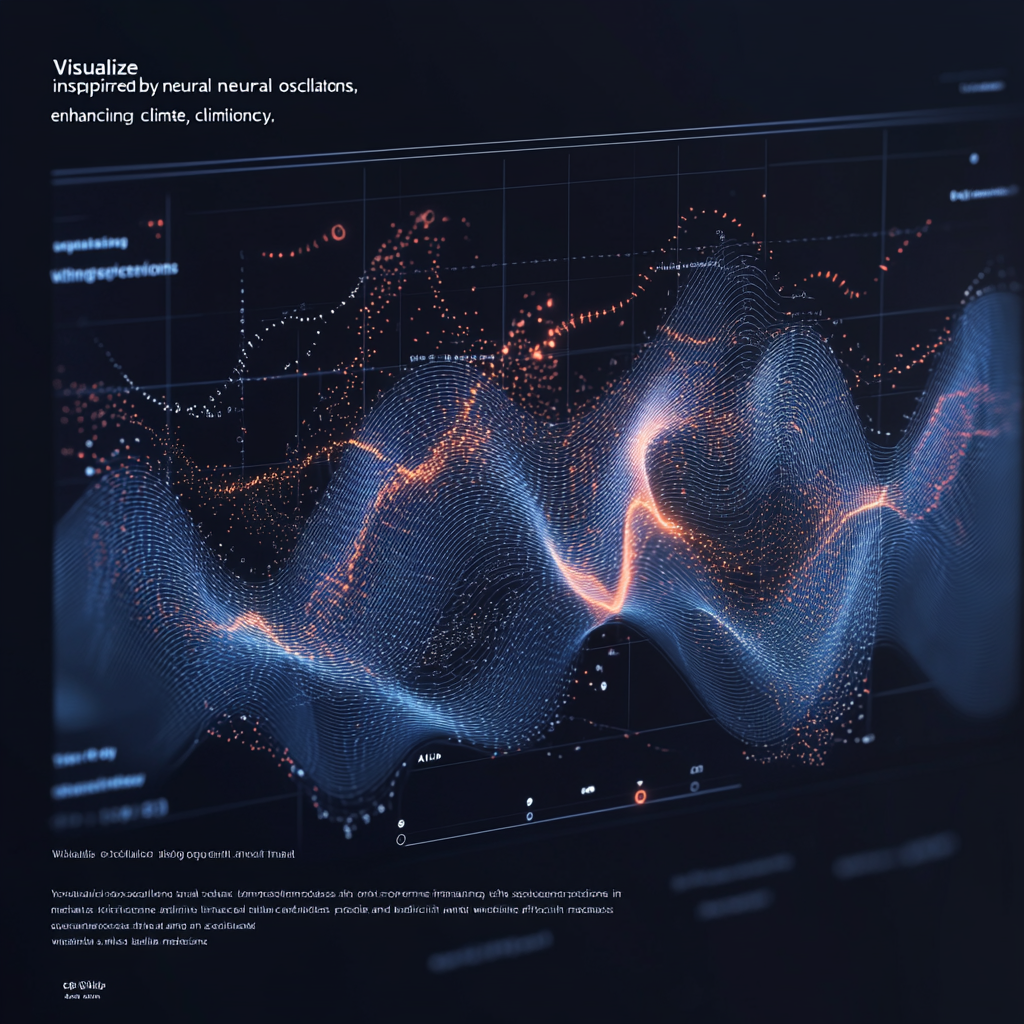
AI model based on neural oscillations delivers stable, efficient long-sequence predictions
Revolutionizing Predictions: AI Models Inspired by Neural Oscillations
Welcome to the thrilling world of artificial intelligence, where researchers are on a relentless quest to devise better ways of predicting the future. What if I told you that the key to unlocking the next generation of AI models lies within the very fabric of our brains? That's right! Say hello to AI models inspired by neural oscillations. These models reflect the dynamic and efficient information processing embodied in our neural circuitry and promise to shake up how we approach long-sequence predictions. Buckle up, my curious friends, as we dive deep into the compelling technology that could reshape the AI landscape.
What’s the Deal with Neural Oscillations?
Let’s break down the basics. Neural oscillations are the brain’s own rhythm and flow—think of them as the symphony of brain waves playing across various frequency bands. These beats are paramount for cognitive functioning, facilitating communication between different regions of our brain, helping you solve problems, remember things, or even just make sense of the chaotic world around you. Imagine trying to decipher a friend’s ramblings at a crowded cafe—those brain rhythms help you filter through the noise.
So why are researchers so interested in these oscillations for AI? The answer lies in the quest for stability and efficiency. By mirroring the principles of neural oscillations, we can develop AI systems that not only understand long sequences of data but do so with a finesse akin to that of a practiced musician. The goal is to ensure that AI understands sequences in a way that feels natural, just like how we humans process complex data effortlessly.
The Groundbreaking LinOSS Model
Hold onto your hats, because here comes a game-changer. Enter the “linear oscillatory state-space models” (LinOSS). This innovative model, brought to life by the brilliant minds at MIT's Computer Science and Artificial Intelligence Laboratory (CSAIL), is nothing short of a technological marvel. With roots deeply embedded in the stability and efficiency of biological systems, LinOSS harnesses the principles of forced harmonic oscillators. Translate that to layman’s terms: it’s about creating a system that behaves reliably and efficiently, handling predictions without drowning in overly complicated parameters.
So what can LinOSS do? Imagine predicting events with an accuracy that allows you to handle sequences teeming with complexities, with lengths extending to hundreds of thousands of data points. Yeah, it’s a big deal. This model can learn intricate long-range interactions, almost like having a conversation with someone and truly understanding their thoughts, rather than just catching a few buzzwords thrown your way.
The Expansive Applications of Neural Oscillation-Based AI
Alright, let’s get into the juicy part—where can we expect to see these revolutionary models in action? Picture this:
-
Finance and Economics: Forget the days of random predictions. With these models, forecasting economic trends and financial ups and downs can offer near-expert levels of accuracy. It's like having a crystal ball—but one that actually works!
-
Environmental Monitoring: Climate patterns are complex, but with the right tools, we can enhance our understanding of them. Analyzing trends now becomes simpler, making strategic planning in environmental efforts more grounded in reality, not guesswork.
-
Medical Research: The medical field is a goldmine for potential breakthroughs, especially when it comes to understanding biological signals. These AI models can help predict health outcomes better, paving the way for advancements in disease management and personalized treatment plans. Imagine a world where doctors can foresee complications before they arise—this could save countless lives!
The Bumps in the Road: Challenges and Future Directions
However, like any enchanting dream, we’re not without our hurdles. Even as we sail forward, challenges loom large. Creating AI models that can adeptly handle complex data sequences while keeping a level head—ensuring both stability and accuracy—remains a formidable task. Adapting to the messy, unpredictable nature of real-world data is a skill still in development.
Even so, the doors to innovation remain wide open. As AI continues to evolve, researchers will undoubtedly dig deeper into biological systems for inspiration, pushing the boundaries of what’s possible. It's an exciting time to witness these advancements unfurl!
Conclusion: The Quest for Knowledge Continues
In closing, neural oscillations are revolutionizing our approach to predictions, infusing AI models with the potential for exhilarating new capabilities. Their ability to tackle long sequences with stability and efficiency could spell triumph across various industries. We find ourselves at the cusp of a truly groundbreaking era, where AI could fundamentally alter the fabric of our daily lives. If you’re as passionate about this technology as I am, don't let the sparks of innovation leave you in the dark.
Want to stay up to date with the latest news on AI innovations and beyond? Subscribe to our Telegram channel: @channel_neirotoken for more updates and insights!

